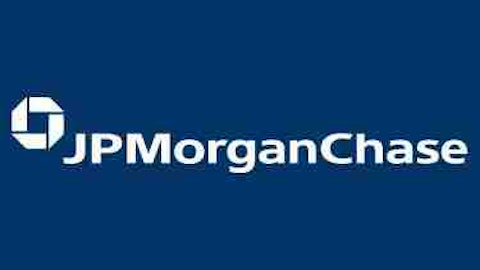While many of these entities are interconnected and dabble in similar areas, it’s important to investors to understand the vast differences and the quick changes that can occur, seemingly in the blink of an eye.
With that in mind, here are 10 graphical representations of some astonishing and overlooked comparisons involving banks, insurers, real estate, and more.
1. Unforeseen circumstances
Source: Bank of America Corp (NYSE:BAC) annual reports.
In 2006, pre-Countrywide acquisition, Bank of America Corp (NYSE:BAC) was considered one of nation’s strongest financial institutions. Little did management and shareholders know that the Countrywide acquisition would ultimately lead to massive legal settlements and liquidity uncertainty as a result of “representations and warranties” made on the droves of questionable mortgages Countrywide had written for years.
2. Sign of commitment

*Includes legacy companies acquired via merger or acquisition.
If you have dreams of running one of the nation’s largest banks one day, you’d better be working for one of them now. All of the executives steering the biggest banking ships have vast experience in the industry and at their specific company.
3. From footnote to flat-out scary
Source: AIG annual reports
Much like Bank of America Corp (NYSE:BAC) shareholders, those holding American International Group Inc (NYSE:AIG) stock were blindsided by an issue seldom covered in years prior. American International Group Inc (NYSE:AIG) shareholders were crushed by the massive losses incurred as a result of the company’s risky credit default swap portfolio.
4. From hero to zero
Source: S&P Capital IQ
The 2008 collapse of Lehman Brother is well documented. But a few details are often overlooked — for the full 2007 fiscal year, Lehman Brothers reported its highest ever net income of more than $4 billion.
5. Vast opportunity

To the average American, having plastic in one’s wallet and purse is nothing new, but internationally, the story looks much different. While the U.S. continues to move away from a cash-centric society, other countries, such as India, have yet to follow suit and offer enormous, long-term potential for the likes of MasterCard and Visa.
6. Big 4 with big differences
Source: Company earnings reports.
The largest four U.S. banks are continually lumped together and referred to as if they were all identical businesses. However, the differences between them can be vast. In the most recent quarterly results, only 43% of revenue at Citicorp (Citigroup Inc (NYSE:C)‘s core operations, excluding Citi Holdings) was booked in North America. On the other hand, Wells Fargo didn’t call out any international revenue.
7. Real estate prices only go up, right?
Source: Robert Shiller.
Yes, you’re reading that chart right — it says 1894. These readings are based on index data from Yale professor and housing market guru Robert Shiller. “Real” prices take into account inflation. Based on this index, real home prices are actually lower than when Glover Cleveland was running the country.
8. Location, location, location
Source: Wells Fargo presentation and BofI 10-K.
BofI Holding, Inc. (NASDAQ:BOFI), the parent company to Bank of Internet, is trying to change the way people bank by conducting its business over — you guessed it — the Internet. The bank has just one physical location — its headquarters in San Diego. In contrast, Wells Fargo has more physical locations than Minnesota Vikings star running back Adrian Peterson has career yards (8,849).
9. Weathering the hard times
Source: S&P Capital IQ.
No bank escaped the wrath of the financial crisis, but some banks weathered the storm better than others. Wells Fargo & Co (NYSE:WFC) and JPMorgan Chase have each only reported one quarterly net loss since 2003.
10. Market retreat
Source: Bipartisan Policy center tabulations of data from Inside Mortgage Finance, “Mortgage and Asset Securities Issuance,” Inside MBS & ABS.
As a result of the financial crisis, the term “mortgage-backed security” conjures up images of massive losses and financial panic in the minds of many investors. However, not all MBSes are created equally. MBSes backed by agencies, such as Fannie Mae and Freddie Mac, are considered ultra-safe. On the other hand, non-agency MBSes are backed by private insurance and caused many of the losses during the financial crisis. In 2006, non-agency MBSes held a dominant position in the MBS-univserse, but today, supply has wilted as demand has evaporated.
The article 10 Shocking and Overlooked Comparisons (in Graphs!) originally appeared on Fool.com and is written by David Hanson.
David Hanson owns shares of JPMorgan Chase and AIG. The Motley Fool recommends AIG, Bank of America, BofI Holding, MasterCard, Visa, and Wells Fargo, owns shares of AIG, Bank of America, BofI Holding, Citigroup, JPMorgan Chase, MasterCard, and Wells Fargo, and has options on AIG.
You can follow David on Twitter.
Copyright © 1995 – 2013 The Motley Fool, LLC. All rights reserved. The Motley Fool has a disclosure policy.













